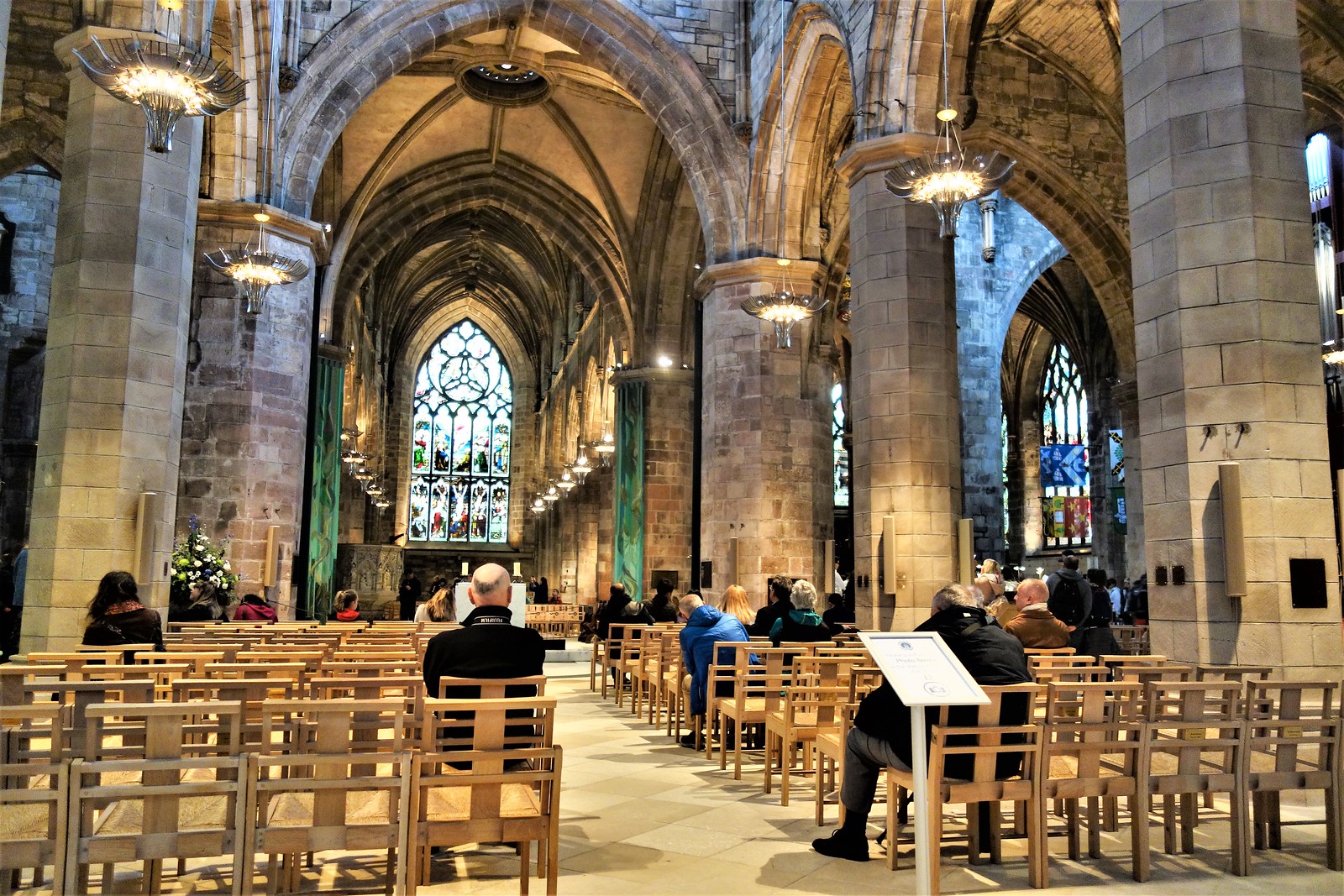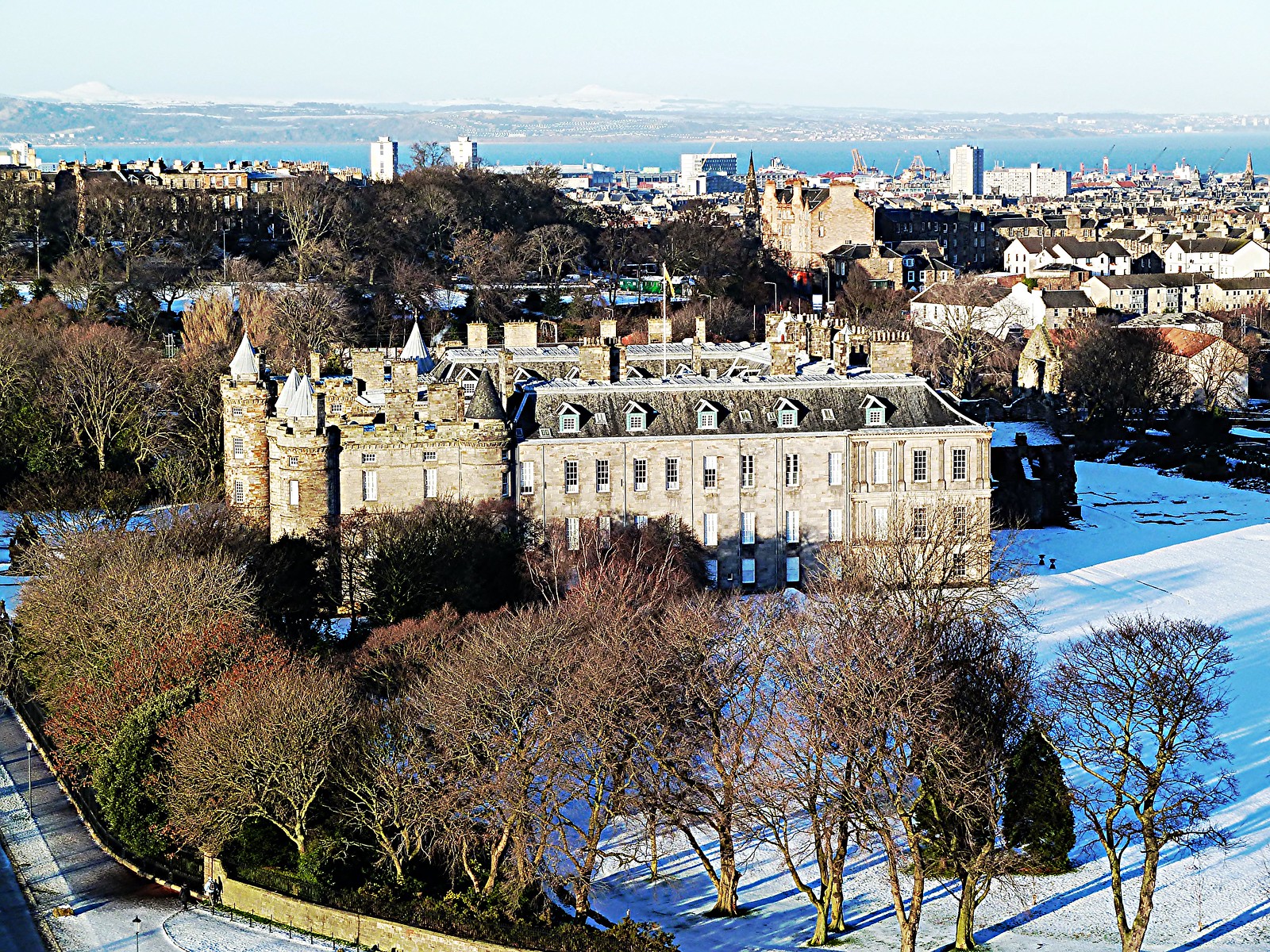Edinburgh's Royal Mile, an eclectic collection of fascinating historic buildings and architecture
(Above image is a capture of the Royal Mile from west to east.)
This afternoon, I am focusing on Edinburgh’s Royal Mile, a popular visitor site in Scotland's capital city with many and varied places of interest.
The Royal Mile is a partly pedestrianised thoroughfare which comprises a succession of streets in the Old Town and stretches between Edinburgh Castle (top) and the Palace of Holyroodhouse (bottom).
Summary information on particular sites and places of interest is provided below.
Edinburgh Castle, dominating the Edinburgh skyline.
The top visitor attraction in Edinburgh. The castle, which is built on an ancient volcanic plug, was first recorded in the 11th century with the present structure evolving over subsequent centuries. Features include:
- One O’Clock Gun.
- St. Margaret’s Chapel (1076).
- Mons Meg Cannon (1449)
- Half Moon Battery (1574).
- Crown Room wherein is kept Scotland’s Crown Jewels and the Stone of Scone.
- Scottish National War Memorial.
Deacon Brodie’s Tavern
This pub commemorates one Deacon Brodie (1741-1788) a leading Edinburgh citizen who lived a double life and was the inspiration for R.L. Stevenson’s work, The Strange Case of Dr Jekyll and Mr Hyde.
Parliament Square
Close to St Giles Cathedral. Home of original Scottish Parliament until formation of the United Kingdom in 1707. Now used by the Scottish legal profession. Visitors can still inspect the former Parliament chamber in Parliament Hall although access is not advertised.
This pub commemorates one Deacon Brodie (1741-1788) a leading Edinburgh citizen who lived a double life and was the inspiration for R.L. Stevenson’s work, The Strange Case of Dr Jekyll and Mr Hyde.
Close to St Giles Cathedral. Home of original Scottish Parliament until formation of the United Kingdom in 1707. Now used by the Scottish legal profession. Visitors can still inspect the former Parliament chamber in Parliament Hall although access is not advertised.
In the Square can be seen an equine statue of
King Charles II (1630-1685) who became King of England, Scotland and
Ireland upon restoration of the monarchy in 1660. The statue dates from
1685.
Mercat Cross in Parliament Square. This has a long history dating
back to 1365. Erected in current position 1885 with part of original
14th century Cross incorporated in shaft. Function was a central meeting
point for the business community and a place where official
communications were read out.
St. Giles Cathedral or High Kirk of Edinburgh. Present building dates
from 14th/15th centuries but on an ancient Christian site dating from
9th century. A Presbyterian church since 1688. Inside is the Thistle
Chapel dating from 1911.Usually open to visitors.
Video clip of Chapel of Knights of the Thistle, Scotland’s chief order of chivalry.
P
P
Example of 17th century architecture at 189
Canongate, one of earliest high-rise buildings in Scotland. A restored
tenement building.
John Knox House, 43-45 High Street
This is constructed of two traditional houses
built in the 15th century. An outstanding example of an Edinburgh
townhouse of the period. John Knox was a leading figure in the
Protestant Reformation of 1560. Now a museum and open to the public.
Canongate Tolbooth (1591)
Former courthouse, burgh jail and meeting place, since converted to a museum.
Dunbar Close Garden. a garden laid out in the style of a the 17th century. Dates from 1748 and is of architectural merit.
Interior of Canongate Kirk



















This comment has been removed by a blog administrator.
ReplyDelete